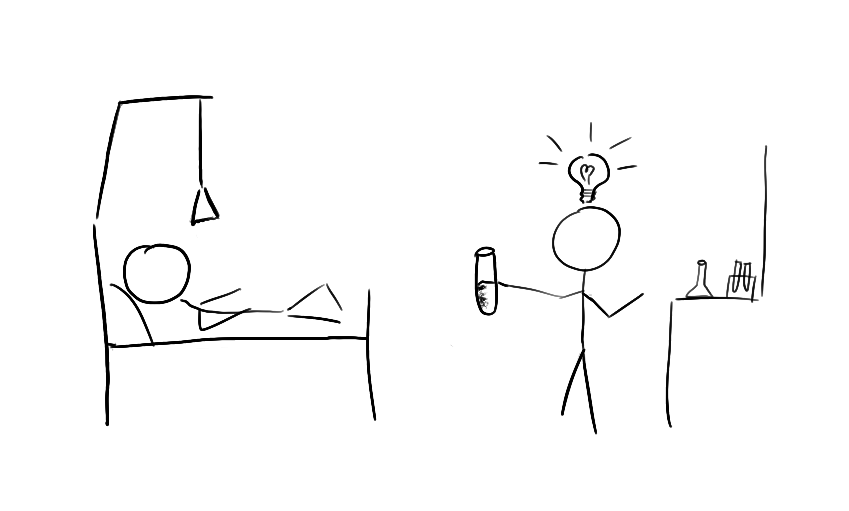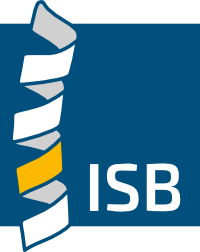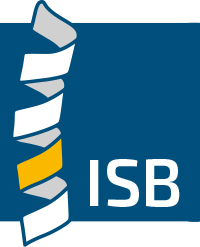Translation of Science to
Medical Application
We aim at translation of our research efforts into medical application. For some of our projects we collaborate with medicinal chemists, toxicologists, and clinical doctors to explore new therapeutic strategies. Our role in these teams is to characterize structure–function relationships, perform target validation, analyse protein-ligand interactions or determine dose-response correlations. Structure determination may help optimizing chemical matters for a site directed and specific interaction with its target protein. With respect to our research interests, translational science holds particularly true for the emerging fields of transcription cycle regulation and the control of inflammation. Insights into the structure-function relationship of a drug target and its mode of interaction can be of great importance for the pharmacological description of a small molecular weight compound.
Translational medicine bridges disciplines across the discovery, development, regulation, and utilization of pharmacological therapeutics. This may include application of research findings from genes, proteins, cells, tissues, organs, and animals, to clinical research in patient populations. Being located at the Biomedical Center of the University Clinics Bonn, we are in an ideal position to link our basic research interest to medicinal problems and potential clinical application. If you are interested in knowing more about our current projects or if you want to join our research team for translational studies, please contact us.
Translational medicine bridges disciplines across the discovery, development, regulation, and utilization of pharmacological therapeutics. This may include application of research findings from genes, proteins, cells, tissues, organs, and animals, to clinical research in patient populations. Being located at the Biomedical Center of the University Clinics Bonn, we are in an ideal position to link our basic research interest to medicinal problems and potential clinical application. If you are interested in knowing more about our current projects or if you want to join our research team for translational studies, please contact us.
Selected reading
- Wilhelmsen K., et al. (2025). Discovery of potent and selective inhibitors of human NLRP3 with a novel mechanism of action. J. Exp. Med. 222: e20242403. doi: 10.1084/jem.20242403.
- Hartman, G., et al. (2024). The discovery of novel and potent indazole NLRP3 inhibitors enabled by DNA-encoded library screening. Bioorg. Med. Chem. Lett. 102: 129675. doi: 10.1016/j.bmcl.2024.129675.
- Kopp, A., et al. (2023). Pyroptosis inhibiting nanobodies block Gasdermin D pore formation. Nat. Commun. 14: 7923. doi: 10.1038/s41467-023-43707-z.
- Hochheiser, I.V., et al. (2022). Structure of the NLRP3 decamer bound to the cytokine release inhibitor CRID3. Nature 604, 184–189. doi: 10.1038/s41586-022-04467-w.
- Jiang, B., et al. (2021). Discovery and resistance mechanism of a selective CDK12 degrader. Nat. Chem. Biol. 17, 675–683.
- Mayor-Ruiz, C., et al. (2020). Rational discovery of molecular glue degraders via scalable chemical profiling. Nat. Chem. Biol. 16, 1199–1207.
- Olson, C.M., et al. (2019). Development of a selective CDK7 covalent inhibitor reveals predominant cell-cycle phenotype. Cell Chem. Biol. 26, 792–803.
- Johnson, S.F., et al. (2016). CDK12 inhibition reverses de novo and acquired PARP inhibitor resistance in BRCA wild-type and mutated models of triple-negative breast cancer. Cell Rep. 17, 2367–2381.
- Zhang, T., et al. (2016). Covalent targeting of remote cysteine residues to develop CDK12 and CDK13 inhibitors. Nat. Chem. Biol. 12, 876–884.



